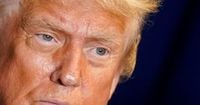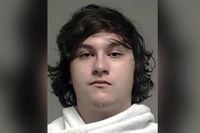On September 25, 2025, President Donald Trump signed a presidential memorandum in the Oval Office, launching a sweeping administration-wide initiative targeting what he called a surge in domestic terrorism and organized political violence. According to reporting from ABC News, the directive instructs the Joint Terrorism Task Force, Department of Justice, Department of Homeland Security, and Department of Treasury to coordinate a strategy to investigate, prosecute, and disrupt individuals and entities engaged in acts of political violence and intimidation. The move, Trump said, was prompted by a belief that “bad people” and “anarchists” on the left, along with their alleged funders, were behind a wave of unrest.
The memorandum lays out a broad definition of domestic terrorist acts, including “organized doxing campaigns, swatting, rioting, looting, trespass, assault, destruction of property, threats of violence, and civil disorder.” It also calls on the attorney general’s office to provide guidance identifying common behaviors and motivations among groups coordinating such acts, with the aim of preventing future violence.
White House deputy chief of staff Stephen Miller was quick to single out “antifa” as a particular focus of the administration’s effort. In his remarks, Miller alleged—without providing evidence—that antifa was responsible for “riots, the attacks on ICE officers, the doxing campaigns and other political assassinations.” He described the movement as “sophisticated, well-funded, and well-planned,” going so far as to claim, “There is really no parallel like this, anything to anything else in the country right now.” Miller painted a picture of a sprawling network, saying, “There is an entire system of feeder organizations that provide money, resources, weapons. And when they’re attacking ICE officers, they’re attacking federal buildings. Whether isolating public officials for harassment, doxing, intimidation, and ultimately attempted assassination, it is all carefully planned, executed and thought through. It is terrorism on our soil.”
FBI Director Kash Patel echoed Miller’s concerns, pledging that the bureau would “follow the money” and partner with other agencies to “root out this new evil that is perpetrating our criminal activities across our societies.” Patel’s comments underscored a central theme of the memorandum: a determination to trace the funding and organizational structures behind politically motivated violence.
However, as ABC News points out, the term “antifa” does not refer to a single organization but rather a political philosophy or movement. The word, short for “anti-fascist,” is commonly used as a catchall for groups opposing authoritarianism, neo-Nazism, and white supremacy. Federal law, meanwhile, does not allow for U.S.-based organizations to be labeled terrorist groups unless they are found to be connected to foreign terror organizations.
The administration’s crackdown comes amid a backdrop of recent violent incidents that have stoked fierce debate over the nature and sources of political violence in America. The New York Post, in a September 26, 2025 opinion piece, highlighted a series of attacks attributed to left-wing actors, including the fatal shooting of conservative activist Charlie Kirk on September 10 at Utah Valley University. The piece also referenced an armed, masked man who fired into a wedding crowd in Nashua, New Hampshire, killing one guest; the arrest of Adeeb Nasir and Adil Justice Ahmed Nasir for allegedly planting an incendiary device under a Fox-13 news van in Salt Lake City; and Anibal Hernandez Santana, a former California Federation of Teachers official, opening fire on Sacramento-based ABC10.
Additionally, the New York Post cited the 2022 near-assassination attempt on Supreme Court Justice Brett Kavanaugh by Nicholas Roske, who had mapped out the residences of several justices before abandoning his plan. The opinion piece argued that the public posting of conservative justices’ home addresses—part of a campaign to intimidate them ahead of the Supreme Court’s Dobbs decision—contributed to the climate of hostility. It also noted that Joshua Jahn, who monitored ICE agents using information from left-wing websites, facilitated attacks on ICE and Border Patrol agents in 2025.
Grassroots activists on the left, the New York Post opined, have convinced themselves they are “fighting fascism,” while academic and media elites either ignore or deny the ensuing violence. The article criticized mainstream media’s response, claiming that outlets like CNN and prominent commentators downplayed or misattributed left-wing violence, and cited a YouGov poll indicating that three times as many liberals believed Kirk’s killer was right-wing compared to those who knew he was left-wing.
In response to the rising tensions, Governor Gavin Newsom issued a call to “tone down the rhetoric on both sides” following recent violent incidents, yet continued to criticize the political right in subsequent statements.
Against this charged backdrop, the Trump administration’s memo has stirred controversy and debate. According to sources cited by ABC News, Aakash Singh, a senior official in Deputy Attorney General Todd Blanche’s office, sent a memo to U.S. Attorney’s offices nationwide, instructing prosecutors to prepare investigations into the Open Society Foundations—a philanthropic group funded by billionaire Democratic donor George Soros. The letter outlined potential charges ranging from material support to terrorism, arson, wire fraud, and RICO (the anti-racketeering statute).
Asked whether the effort included a formal investigation into Soros, President Trump replied, “Well, Soros is a name, certainly, that I keep hearing. I don’t know, Soros is a name that I hear. I hear a lot of different names. I hear names of some pretty rich people that are radical left people,” adding, “they’re bad and we’re gonna find out if they are funding these things.”
The Open Society Foundations, for their part, issued a categorical denial. In a statement to ABC News, a spokesperson said, “The Open Society Foundations unequivocally condemn terrorism and do not fund terrorism.”
While the administration’s actions have been cheered by some who see them as a necessary response to escalating violence, critics argue that the focus on left-wing groups risks politicizing law enforcement and stifling legitimate dissent. The debate has become a flashpoint in the broader national conversation about free speech, public safety, and the boundaries of protest in a polarized era.
As the Justice Department, FBI, and other agencies begin implementing the new strategy, questions linger about the effectiveness—and potential unintended consequences—of the crackdown. With both sides of the political spectrum trading accusations and anxieties running high, the country remains on edge, awaiting the next development in a saga that shows no signs of fading from the headlines.
The administration’s memo, the violent incidents of recent weeks, and the heated rhetoric from all quarters have left many Americans wondering what, if anything, will break the cycle of escalation. For now, the search for answers—and accountability—continues.


